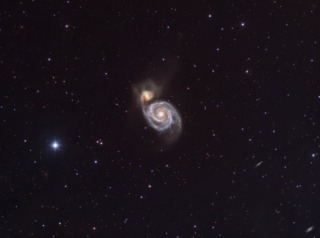
- Constellation: Canes Venatici
- Right Ascension: 13h 29m 52.7s
- Declination: +47° 11′ 43″
- Distance: 23 million ly
Messier 51 and NGC 5194 are a pair of interacting galaxies. It is the brightest member of the M51 galaxy group, which also includes M63, the Sunflower galaxy. It is about 35-40% the size of our galaxy, and is Seyfert galaxy with an active galactic nucleus. NGC 5194 is thought to have passed through M51's disk some 500 million years ago that led to an enhanced spiral pattern and increased star formation and then passing through the disk again some 50-100 million years ago to a position currently located behind the galaxy. The two galaxies will eventually merge after a few more passes.
- Details
- Category: Galaxies
- Telescope: Explore Scientific 127 Refractor
- Camera: ZWO 1600 MM
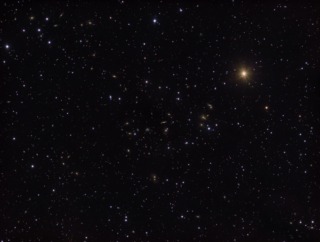
- Constellation: Hercules
- Right Ascension: 16h 05m 15.0s
- Declination: +17° 44′ 55″
- Distance: 500 million ly
Abell 2151 - The richest galaxy cluster of the Hercules super galaxy cluster. It contains around 200 galaxies and is located some 500 light years away. It contains a wide variety of spirals and elliptical as well as lenticular galaxies.
- Details
- Category: Galaxies
Read more: The Hercules Galaxy Cluster (2020)
- Telescope: Explore Scientific 127 Refractor
- Camera: ZWO 1600 MM
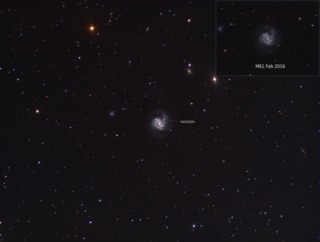
- Constellation: Virgo
- Right Ascension: 12h 21m 54.9s
- Declination: +04° 28′ 25″
- Distance: 52 million ly
Messier 61 is a barred spiral galaxy located in Virgo, and part of the Virgo galaxy cluster. M61 is roughly the same size as our galaxy and is classified as a starburst galaxy that is undergoing a high rate of star formation. On May 6, supernova 2020jfo was discovered in the galaxy making it one of seven that has happened in this galaxy that has been observed this century.
- Details
- Category: Galaxies
- Telescope: Explore Scientific 127 Refractor
- Camera: ZWO 1600 MM
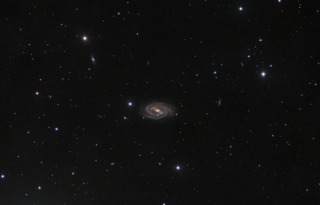
- Constellation: Ursa Major
- Right Ascension: 11h 57m 36.0s
- Declination: +53° 22′ 28″
- Distance: 83 million ly
Messier 109 is a barred spiral located in Ursa Major, and the brightest galaxy of the M109 galaxy group. It has a radius of around 90,000 light years and contains an estimated 1 trillion stars. Charles Messier made note of the nebula, but it wasn't included in his original catalog. M104 through M110 were added later by other astronomers. Many distant background galaxies are in this view.
- Details
- Category: Galaxies
- Telescope: Explore Scientific 127 Refractor
- Camera: ZWO 1600 MM
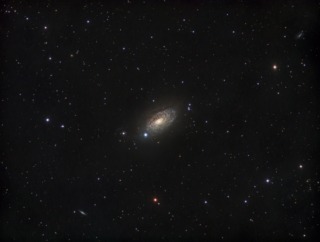
- Constellation: Canes Venatici
- Right Ascension: 13h 15m 49.27s
- Declination: +42° 01′ 45.72"
- Distance: 29.3 million ly
Messier 63, also called the Sunflower Galaxy is a spiral galaxy located in Canes Venatici. While the galaxy only has two major spiral arms, they are patchy and wrapped around the core forming what is called a flocculent type spiral galaxy. It is a prominent member of the M51 galaxy group.
Many distant background galaxies are also present in the image.
Discovered by Pierre Mechain in 1779, and added by Charles Messier to his catalog.
- Details
- Category: Galaxies
- Telescope: Explore Scientific 127 Refractor
- Camera: ZWO 1600 MM
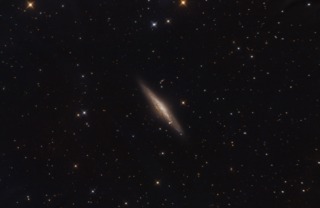
- Constellation: Lynx
- Right Ascension: 08h 52m 41.3s
- Declination: +33° 25′ 19″
- Distance: 25 million ly
NGC 2683 is a nearly edge on spiral galaxy, with a possible barred structure. Located in Lynx, and lies approximately 25 million light years away.
- Details
- Category: Galaxies
- Telescope: GSO RC10
- Camera: ZWO A071 Color